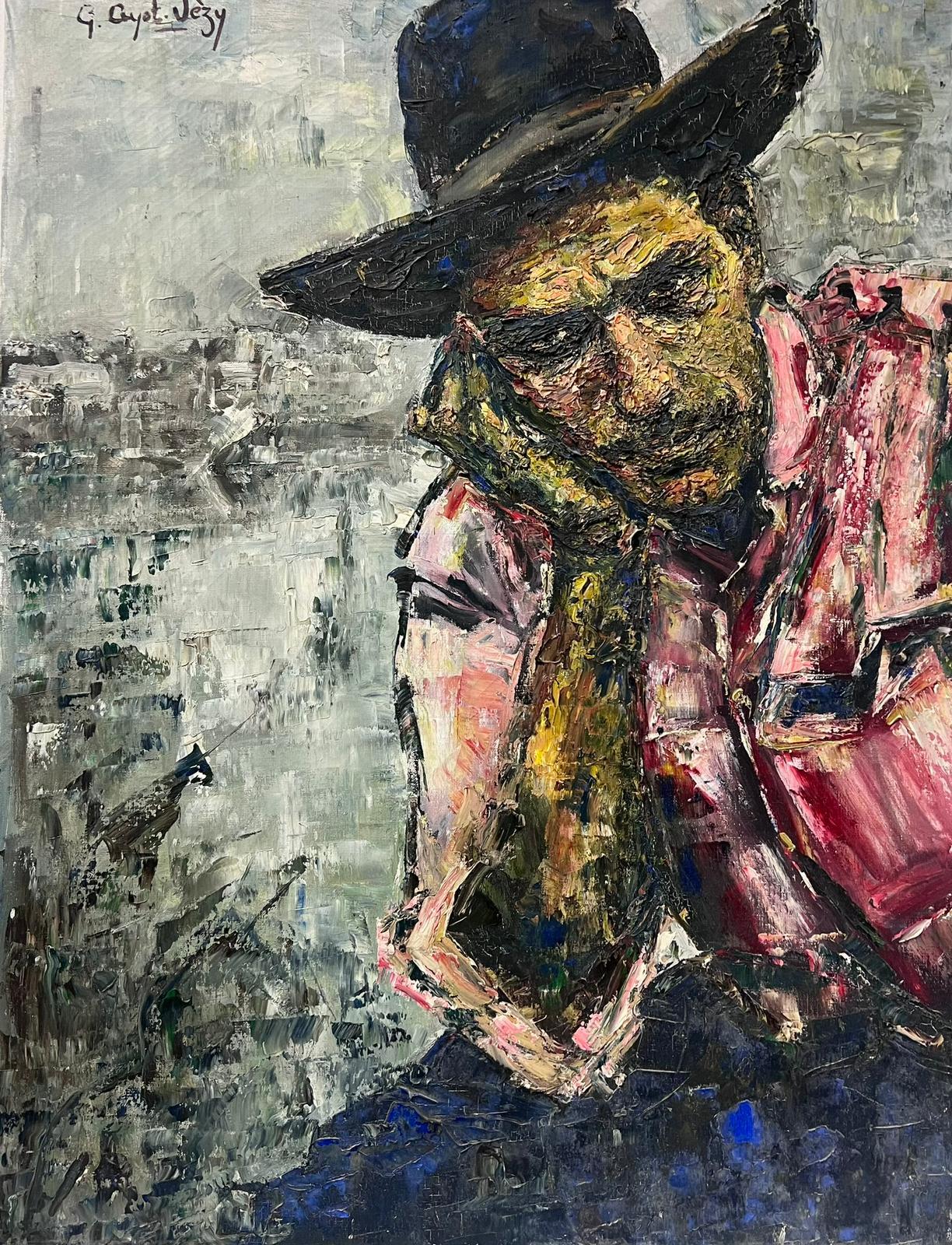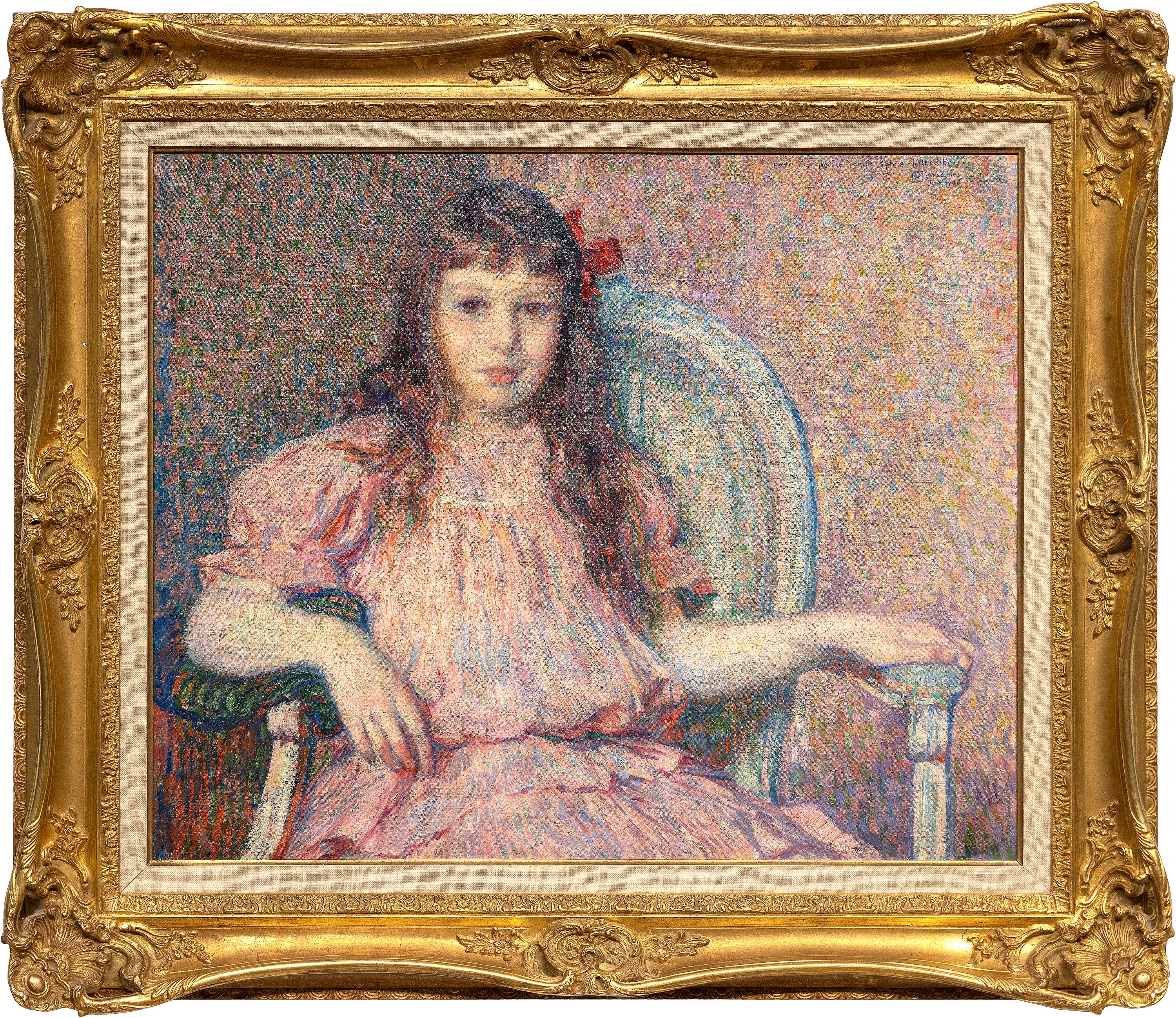Pablo PicassoBuste d'homme barbu by Pablo Picasso1965
1965
About the Item
- Creator:Pablo Picasso (1881-1973, Spanish)
- Creation Year:1965
- Dimensions:Height: 33 in (83.82 cm)Width: 27.13 in (68.92 cm)Depth: 2 in (5.08 cm)
- Medium:
- Movement & Style:
- Period:
- Condition:
- Gallery Location:New Orleans, LA
- Reference Number:
Pablo Picasso
One of the most prolific and revolutionary artists the world has ever seen, Pablo Picasso had a tremendous impact on the development of 20th-century modern art. Although he is best known for his association with the Cubist movement, which he founded with Georges Braque, Picasso’s influence extends to Surrealism, neoclassicism and Expressionism.
“Every act of creation is, first of all, an act of destruction,” the Spanish artist proclaimed. In Picasso's Cubist paintings, he emphasizes the two-dimensionality of the canvas, breaking with conventions regarding perspective, foreshortening and proportion. Picasso was inspired by Iberian and African tribal art. One of his most famous pre-Cubist works is Les Demoiselles d’Avignon (1907), a painting considered immoral and shocking at the time for its depiction of nude women whose faces resemble Iberian tribal masks.
Picasso made many portraits in this style, most often of the women in his life, their expressively colored faces composed of geometric shards of surface planes. In Woman in a Hat (Olga), 1935, he painted his first wife as an assemblage of abstract forms, leaving the viewer to decipher the subject through the contrasting colors and shapes. Picasso was a tireless artist, creating more than 20,000 paintings, drawings, prints, ceramics and sculptures. Tracing his life’s work reveals the progression of modern art, on which he had an unparalleled influence.
Browse an expansive collection of Pablo Picasso's art on 1stDibs.
- ShippingRetrieving quote...Ships From: New Orleans, LA
- Return PolicyThis item cannot be returned.
- La lecture au jardin (Lesson in the Garden)By Georges d'EspagnatLocated in New Orleans, LAFrench Post-Impressionist painter Georges d’Espagnat captures a charming moment between a mother and her child in this vibrant oil on canvas. Rendered with a studied use of complementary colors and bold brushstrokes, the painting showcases the artist's unique Post-Impressionist style. Remembered as one of the most individualistic artists of the 20th century, his distinctive canvases bring together the loose brushwork of the Impressionists and the bold color palette favored by the Fauves. Together, they achieve a vibrant spontaneity that lends itself well to the carefree subjects of the present work. Masterfully composed, La lecture au jardin moves beyond the Impressionist instinct to capture a fleeting moment on canvas. Rather, d'Espagnat succeeds in creating a deep feeling of harmony in the work. Warm colors are perfectly balanced with cool tones, while vertical and horizontal lines are softened by the curves of the foliage and his subjects' figures. Through his simplification of forms and intentional use of color and line, he creates a scene that is carefully designed and thoroughly modern. A similar view of a mother and her child by d'Espagnat is currently in the collection of the Metropolitan Museum of Art (New York). The Post-Impressionist painter was an individualist since his youth, choosing to forgo traditional schooling in order to independently study the Old Masters in the Louvre. He soon became involved with the most prominent Impressionist and Post-Impressionist painters of the age, including Pierre-Auguste Renoir and Paul Signac, who themselves existed outside the traditional norms of French Academic training. In 1891, he exhibited at the Salon des Refusés, and again the following year at the Salon des Indépendants. By 1895, he held his first one-man show in Paris, and just three years later his success earned him a solo show at the prestigious Durand-Ruel Gallery. Between 1905 and 1910 he made several trips to visit Renoir on the Côte d’Azur. Their close friendship resulted in a group exhibition at Marcel Bernheim...Category
Late 19th Century Post-Impressionist Portrait Paintings
MaterialsCanvas, Oil
- L’air Qu’on Respire by Jean Pierre CassigneulBy Jean-Pierre CassigneulLocated in New Orleans, LAJean-Pierre Cassigneul b.1935 French L’air qu’on respire (The Air We Breath) Signed “Cassigneul” (lower right) Signed, titled and dated "L’air qu’on respire / Cassigneul / 2001" (...Category
21st Century and Contemporary Post-Impressionist Portrait Paintings
MaterialsCanvas, Oil
- Josianna, Jeune Femme au Ruban by Jean Gabriel DomergueBy Jean-Gabriel DomergueLocated in New Orleans, LAJean-Gabriel Domergue 1889-1962 French Josianna, jeune femme au ruban (Josianna, Young Woman With Ribbon) Signed "Jean Gabriel Domergue" (lower left) Oil on panel A young French beauty known as Josianna is the subject of this work by Jean-Gabriel Domergue, and the oil on panel is a perfect example of the portraits for which the artist is renowned. His model embodies the concept of the la belle Parisienne: slender, swan-like women bearing an unmistakable grace and style. Domergue includes a delicate pink ribbon around her neck, suggesting a fashionable garment, set against a soft pastel-colored backdrop. The artist's oeuvre encompasses women from all facets of society, from aristocratic figures such as Liane de Pougy and Nadine, Baroness de Rothschild...Category
20th Century Post-Impressionist Figurative Paintings
MaterialsPanel, Oil
- Henry Bowles Howard, 12th Earl Of Suffolk And 5th Earl Of BerkshireLocated in New Orleans, LASir Joshua Reynolds 1723-1792 | British Sir Henry Bowles Howard, 12th Earl of Suffolk and 5th Earl of Berkshire Oil on canvas Sir Joshua Reynolds is unequivocally considered the most important English portraitist of the 18th century who was instrumental in adapting the Grand Manner style in the portrait genre. In fact, when the Royal Academy was founded in 1768, Reynolds was elected its first President, setting the precedent of quality for which all other portraitists would strive. Reynolds's portrait of Henry Bowles Howard, 12th Earl of Suffolk, showcases his genius in the genre and mastery over the medium. Reynolds’s portrait of the Earl expertly invokes classical values with strong lighting, rich colors and expert attention to detail to help underscore the prominence and revered echelon of the sitter. Howard was an esteemed British politician and Knight of the Garter. He served as Secretary of State for the Northern Department from 1771 to 1779, and he played a key role in utilizing mercenaries during the American Revolution and safeguarding Sweden's independence. The portrait employs Reynolds's signature style to render Howard rightfully as a gentleman of distinction. Captured seated in a stately library, the Earl appears learned and austere as he places one hand upon a stack of important documents and looks wistfully into the distance. Reynolds makes these compositional choices decisively, as the seated position gives Howard a weighty appearance of importance and the semi-profile turn captures his countenance at an attractive angle that highlights his strong, masculine features. The work draws on the classical conventions of Greek and Roman art and the Italian Renaissance masters, anchoring the nobleman in a history of refinement. Everything from his strong yet welcoming expression to his pale face enlivened by a rush of blood to the cheeks presents the picture of a strong, vital and powerful leader. As the first president of the Royal Academy in London, Reynolds’s commissions raised the status of an artist in Britain during the Romantic period and also established the portrait as an esteemed high art genre that garnered equal import to the history paintings that reigned supreme in decades prior. Today, Reynolds’s works grace the walls of the most important museums in the world, including the Louvre, the Metropolitan Museum of Art, and the National Gallery in London, among others. Circa 1770 Canvas: 50 1/2" high x 40 1/4" wide Framed: 61" high x 52 1/2" wide x 3 1/2" deep Provenance: Sir Henry Howard, 12th Earl of Suffolk and 5th Earl of Berkshire, 1739-1779 His mother, Lady Mary Howard, née Finch, Lady Andover, d. 1803 Acquired by descent to her daughter, Frances, and her husband Richard Bagot (later Howard) Acquired by descent to their daughter, Mary (1784-1877), and her husband Col. Fulke Greville Upton (later Howard), d. 1846 Acquired by descent to Lieutenant Colonel H.R.G. Howard Sale, Christie's, London, March 24, 1961, no. 29 Julius Weitzner, London and New York Sale, Paris, Musée Galliéra, December 7, 1965, no. 165 Newhouse Galleries, New York, NY Mr. and Mrs. F. Howard Walsh, Fort Worth, Texas, 1966 Walsh Family Art Trust Private collection, Oregon M.S. Rau, New Orleans Exhibited: British Institution, London, 1844, no. 130, loaned by the Hon. Fulke Greville Howard. South Kensington, "Second special exhibition of National Portraits," 1867, no. 478, lent by the Hon. Mrs. Greville. Agnew's, London, 1903, no. 17. Literature: Algernon Graves and W. V. Cronin, A History of the Works of Sir Joshua Reynolds, P.R.A., vol. 3 (London, 1899), p. 945. David Mannings...Category
18th Century Other Art Style Portrait Paintings
MaterialsCanvas, Oil
- Blackstone CigarsBy Norman RockwellLocated in New Orleans, LAA charming relic of a bygone era, this rare oil is the work of the inimitable American illustrator, Norman Rockwell. The iconic artist’s ability to render the details and nuances of ...Category
Early 20th Century Other Art Style Figurative Paintings
MaterialsOil, Canvas
- SolitudeBy Guillaume SeignacLocated in New Orleans, LAFrench Academic painter Guillaume Seignac was renowned for his masterful treatment of the idealized nude. His languishing female subjects based on Greco-Roman prototypes were and rem...Category
19th Century Academic Nude Paintings
MaterialsOil, Canvas
- Signed M. Maccari Post Impressionist Figurative Painting dated 1956 oil canvasBy Mino MaccariLocated in Florence, ITThe painting (oil on canvas, 44.5 x 35 cm; with wood frame 64 x 54,5 cm) represents a moment on deception. It's signed Maccari on the bottom left, and it's dated 1956 and titled "ins...Category
1950s Post-Impressionist Figurative Paintings
MaterialsOil, Canvas
- Figurative oil painting titled Femme Mettant Son Bas by Georges Manzana PissarroBy Georges Henri Manzana PissarroLocated in London, GBFemme Mettant Son Bas by Georges Manzana Pissarro (1871 - 1961) Oil on canvas 100 x 56 cm (39 ⅜ x 22 inches) Signed and dated lower left, G. Manzana 1905 This work is accompanied by...Category
Early 1900s Post-Impressionist Figurative Paintings
MaterialsCanvas, Oil
- 1970's French Portrait of a Distinguished Lady Oil Painting on Canvas d.1975Located in Cirencester, GloucestershirePortrait of a Lady French Impressionist artist, circa 1975 inscribed verso oil on canvas canvas: 24 x 18 inches provenance: private collection, France condition: very good and sound ...Category
Late 20th Century Post-Impressionist Portrait Paintings
MaterialsOil, Canvas
- 1960's French/ Spanish Portrait of Characterful Man with Hat Signed Oil PaintingLocated in Cirencester, GloucestershirePortrait of a Man French/ Spanish School, circa 1960's indistinctly signed oil on canvas, unframed canvas: 25.5 x 20 inches provenance: private collection condition: very good and s...Category
Mid-20th Century Post-Impressionist Portrait Paintings
MaterialsOil, Canvas
- Maria Van Rysselberghe au coin du feuBy Theo van RysselbergheLocated in Palm Desert, CA"Maria Van Rysselberghe au coin du feu" is a portrait painting by Post-Impressionist Théo van Rysselberghe. The portrait is signed lower right, "Atelier Van Rysselberghe". The framed...Category
1910s Post-Impressionist Portrait Paintings
MaterialsCanvas, Oil
- Portrait de Sylvie LacombeBy Theo van RysselbergheLocated in Palm Desert, CA"Portrait de Sylvie Lacombe" is a Post-Impressionist painting by Théo van Rysselberghe. The portrait is signed with monogram and dedication, upper right, "pour ma petite amie Sylvie ...Category
Early 1900s Post-Impressionist Portrait Paintings
MaterialsCanvas, Oil
Recently Viewed
View AllRead More
Science Uncovers Hidden Truths behind Young Pablo Picasso’s Blue Period
From 1901 to 1904, Picasso limited his palette to bluish hues in producing some of his most famous early works. A new show looks at the recycled materials, hidden underpaintings, surprising influences and bohemian lifestyle that led to their creation.
Who Are the Most Popular Artists on 1stdibs?
Learn the stories of some of the world's most recognizable artworks and their makers.






